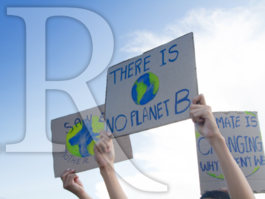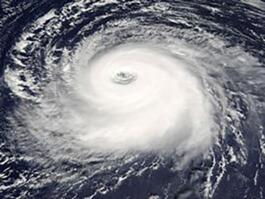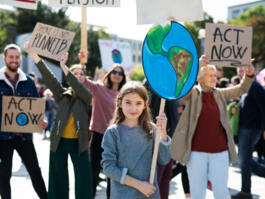Voters See Sun As Global Warming Factor But Blame Humans More
Al Gore may think it’s "BS", but most voters believe solar activity has an impact on global cooling and warming. A narrow plurality gives human activity the edge over sun activity, though, when it comes to which one has a bigger impact on the problem.
The latest Rasmussen Reports national telephone survey finds that 60% of Likely U.S. Voters think it’s at least somewhat likely that the level of activity on the sun, including solar flares and sunspots, has an impact on the long-term heating and cooling of the earth’s atmosphere. Just 22% feel that it’s unlikely solar activity influences the atmosphere’s long-term temperature.
These findings include 29% who say it’s Very Likely that solar activity has a long-term impact impacts and only six percent (6%) who believe it’s Not At All Likely. Seventeen percent (17%) are not sure. (To see survey question wording, click here.)
Still, 44% of voters thinks human activity has a bigger impact on the long-term heating and cooling of the Earth’s atmosphere than solar activity does. Thirty-seven percent (37%) disagree and believe solar activity has a greater impact. Eighteen percent (18%) are not sure.
Gore in a speech last month at the Aspen Institute dismissed critics of global warming, including those who cited solar activity as a warming and cooling factor, with a popular barnyard euphemism. Gore and President Obama, among others, continue to argue that human activity is chiefly to blame and seek major limits on that activity. But global warming skeptics have seized on a new study out of Europe that links solar activity to long-term changes in the temperature of the earth’s atmosphere.
Most voters (59%) say global warming is at least a somewhat serious problem. However, voters over the past three years have been trending away from the belief that human activity is primarily the cause of global warming and have been more inclined to blame planetary trends instead.
(Want a free daily e-mail update? If it's in the news, it's in our polls). Rasmussen Reports updates are also available on Twitter or Facebook.
The survey of 1,000 Likely Voters was conducted on September 2-3, 2011 by Rasmussen Reports. The margin of sampling error is +/- 3 percentage points with a 95% level of confidence. Field work for all Rasmussen Reports surveys is conducted by Pulse Opinion Research, LLC. See methodology.
Rasmussen Reports is a media company specializing in the collection, publication and distribution of public opinion information.
We conduct public opinion polls on a variety of topics to inform our audience on events in the news and other topics of interest. To ensure editorial control and independence, we pay for the polls ourselves and generate revenue through the sale of subscriptions, sponsorships, and advertising. Nightly polling on politics, business and lifestyle topics provides the content to update the Rasmussen Reports web site many times each day. If it's in the news, it's in our polls. Additionally, the data drives a daily update newsletter and various media outlets across the country.
Some information, including the Rasmussen Reports daily Presidential Tracking Poll and commentaries are available for free to the general public. Subscriptions are available for $4.95 a month or 34.95 a year that provide subscribers with exclusive access to more than 20 stories per week on upcoming elections, consumer confidence, and issues that affect us all. For those who are really into the numbers, Platinum Members can review demographic crosstabs and a full history of our data.
To learn more about our methodology, click here.



